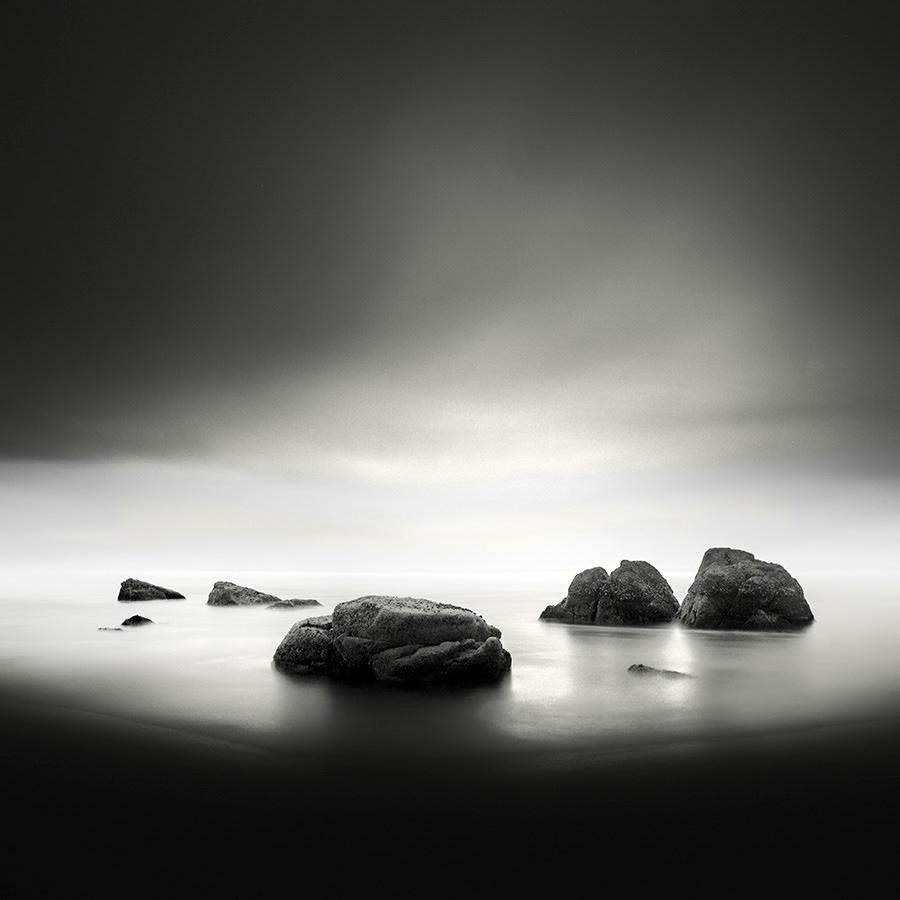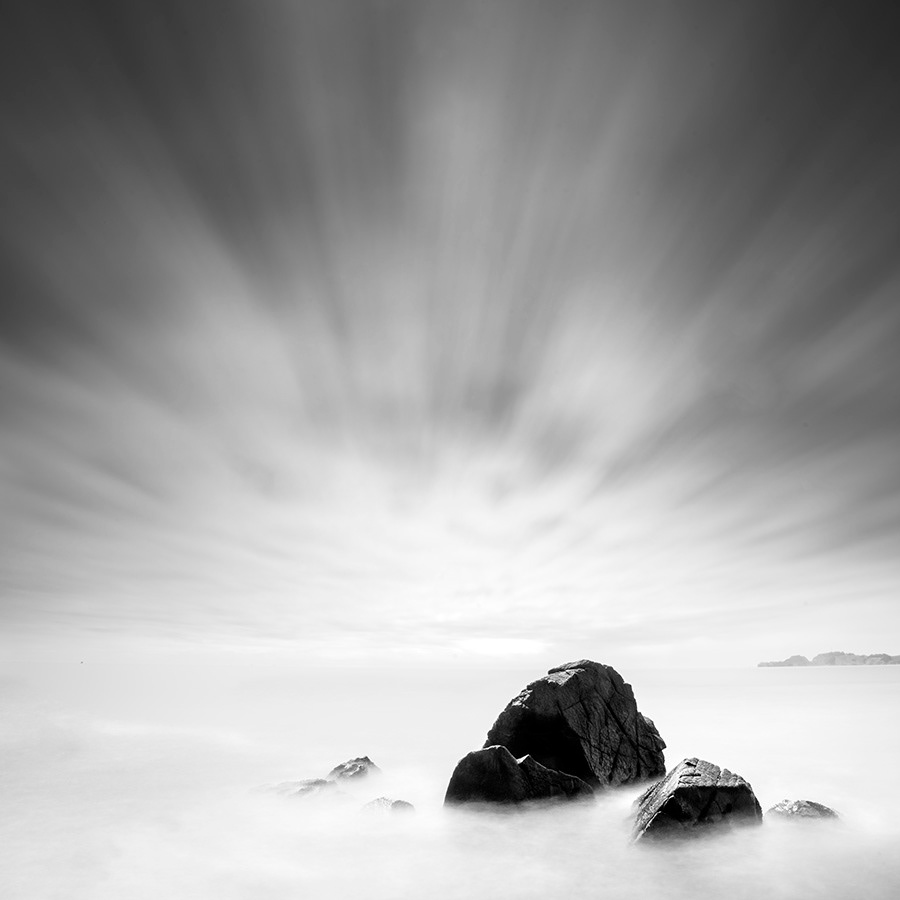karesansui

Let me be perfectly clear before I begin: these are images of rocks, sand, and water that I encountered while photographing the shorelines of the California and Oregon coast. Nothing more— and maybe even less.To say otherwise is to sail through a ship of fantasy-filled seas towards exotic lands filled with pretentious ideas.
However, my interest in and studies of karesansui, commonly referred to in the Western World as Zen gardens or rock gardens, has inevitably played a role in how, even if not consciously, I often frame gatherings of rocks. A significant factor of rock gardens is the selection and placement of stones, which represent natural features such as mountains, islands, and even living creatures depending on how they have been arranged. The white gravel, which is often raked in patterns, typically emulates the movement of water—such as a river, a ripple, or waves. All in all, the creation and maintenance of a Zen Garden (for example the initial selecting and placing of the stones and the continued raking of the patterns) offers the individual an opportunity for meditation— just as it offers the viewer the same opportunity. Typically, individual rocks are not meant to be the focus, but, rather, the overall composition of the placement of all the rocks, serving as more an opportunity to see and experience and meditate rather than to figure out any puzzle of what its potential symbolic meanings might suggest.

Image sourced and borrowed from a Google search in order to provide an example of karesansui (credit unknown)
So, why discuss such things when presenting a series of images of rocks that sit along shorelines, all of them having been exposed to vast spans of time-driven erosion from the tides rushing forward and receding? Let me stress, again, that these are just pictures of rocks. However, having tried to incorporate the placement of stones in my own garden, I have spent a lot of time pondering this action—so much so that I cannot help but think of how a photographer, in a sense, can select and place stones within the frame of an image.
In Sakuteiki, the oldest known book about gardening (from Japan in the 11th century), the master gardener instructs gardeners to “select several places within the property according to the shape of the land and the ponds, and create a subtle atmosphere, reflecting again and again on one’s memories of wild nature.” Perhaps, we, as composers and framers of nature, might learn something from such a goal— and from the unspoken lessons of these gardens. When we photograph stones or sea stacks, we are very much making a choice, a selection, and a placement. Moreover, we are creating something other, something that is not the rocks we encounter and photograph. We are very much reflecting on our memories of nature— even if we are not doing it consciously.
In Sakuteiki, the oldest known book about gardening (from Japan in the 11th century), the master gardener instructs gardeners to “select several places within the property according to the shape of the land and the ponds, and create a subtle atmosphere, reflecting again and again on one’s memories of wild nature.” Perhaps, we, as composers and framers of nature, might learn something from such a goal— and from the unspoken lessons of these gardens. When we photograph stones or sea stacks, we are very much making a choice, a selection, and a placement. Moreover, we are creating something other, something that is not the rocks we encounter and photograph. We are very much reflecting on our memories of nature— even if we are not doing it consciously.

At the risk of straying too far from reality, a photograph of rocks that we have selected and framed (as if we are placing them in the composition) seemingly emulates the forces of nature, its movements (even if stilled) and its seemingly static elements. A photo preserves some of the essence, but it also inevitably alters and, perhaps, even interprets. A long exposure squeezes seconds and minutes and even hours (depending on the choice of the photographer) into a single frame, preserving its inherent silence (that silence primarily being experienced in the inner world of the photographer and, at times, also later being experienced by those viewers who bring their own silences to the image when they encounter it). I hesitate to even suggest that a photo can preserve and interpret nature in the same way a garden can-- yet photos do, in a sense, preserve and even interpret nature as seen by the individual behind a camera. Therefore, I hesitate even more to say that these images are little gardens, but is it not at least an intriguing exercise to ponder such things? Perhaps, not, but let me end by first reminding you one more time that these are just images of rocks on shorelines-- and then invite you to carefully select and place your own stones into the contrasts and tones of your own images.
Here is a selection of mine:











